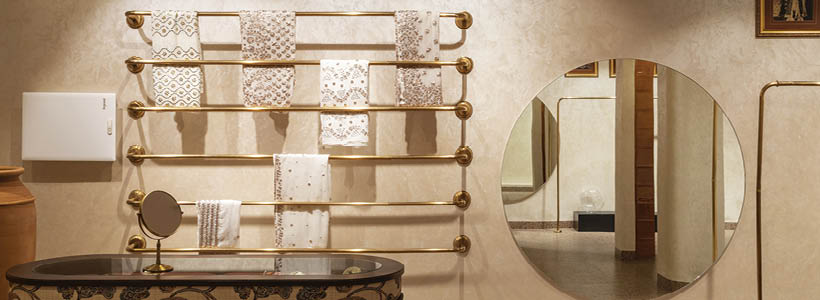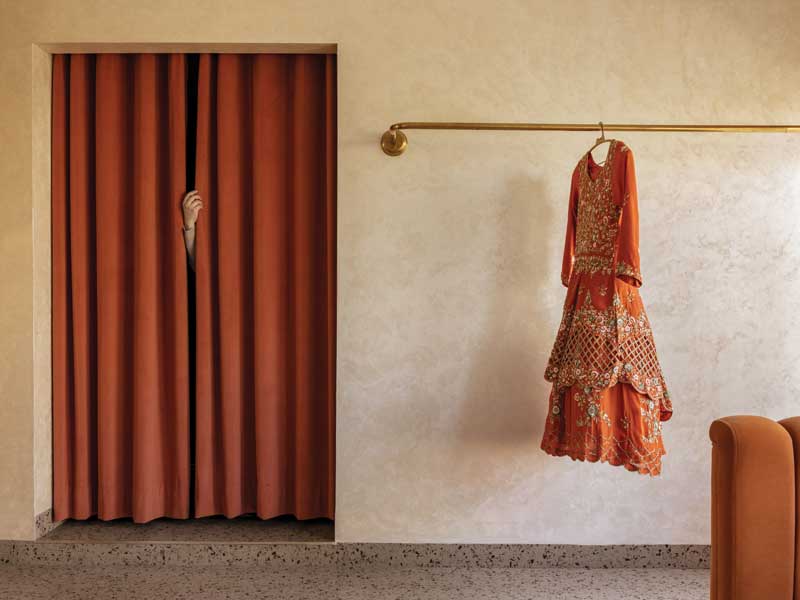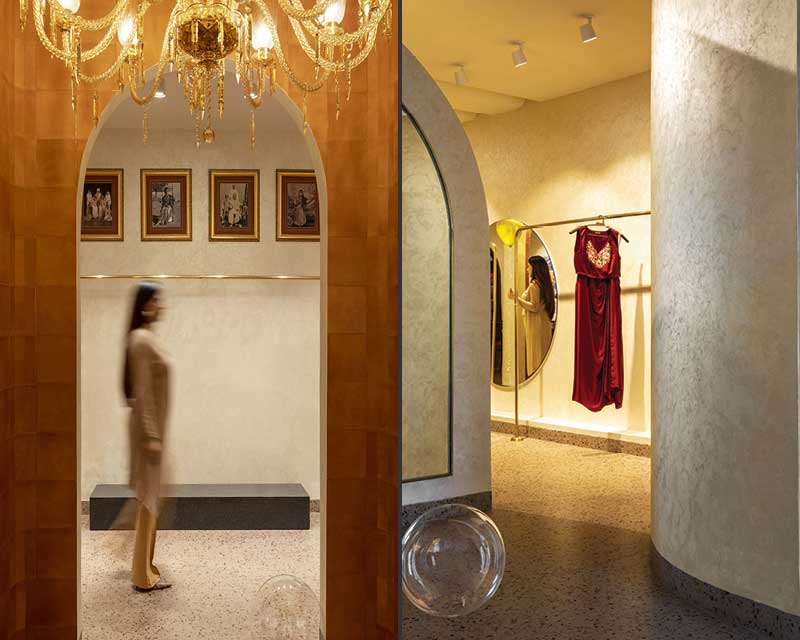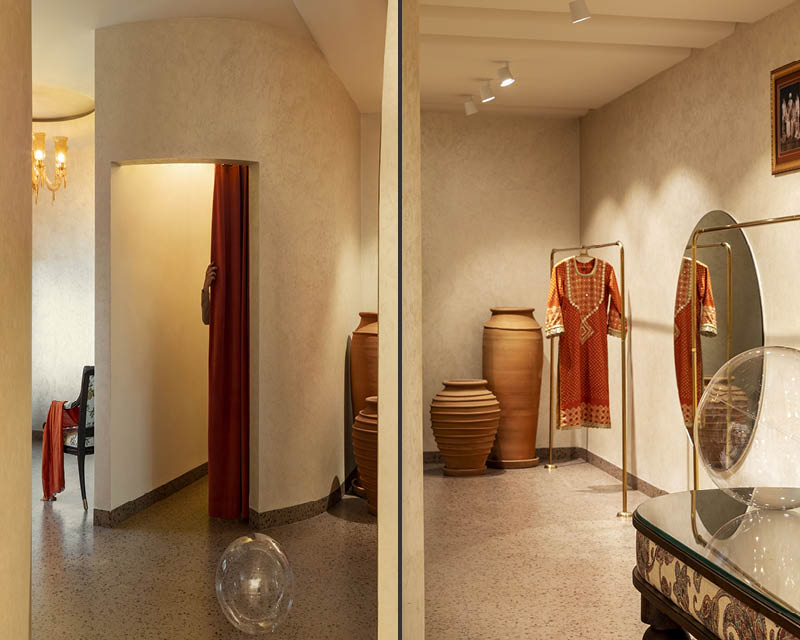
[button link=”https://www.arredanegozi.it/2023/09/progetto-boutique-minny-sandhu-curato-da-studio-bora-da/” icon=”none” target=”” color=”a30b0b” textcolor=”ffffff”]TESTO ITALIANO[/button]
Pre-partition Punjab is still alive in the hearts of many! The undivided territory is reminiscent of culture, food, subtle lifestyle, and of course, the havelis. Minny Sandhu’s clothing store’s design is derived from Punjab’s undivided plan, the territory which is sentimentally close to every Punjabi, whose heart still yearns for the undivided era. On a historic note, this space makes one take a trip down memory lane.

This clothing store, designed by Bora Da, is set in the land of five rivers; whose design is more of a line between ‘nostalgia’ and ‘moving on with time’.
Everything, including the furniture, is set according to the old havelis of Punjab to reflect the modest lifestyle of the people. Every texture and color used resembles the old-world charm of the traditional havelis. With mosaic patterned tiles, rustic walls, and a soft beam of yellow lights, the store meanders one’s thoughts to the old havelis of Punjab which brimmed with chic royalty.
The store has a longitudinal plan which is divided into four sections; with jewelry display tables in the first section, a central standout feature in the second section, a cash counter in the third section; and service areas, a trial room, and a lounge in the fourth section. Minny Sandhu’s resplendent clothing is displayed in the first three sections along the store’s walls. The muted rustic tone of the interiors greet every customer with honor, whereas its coziness delves them into the the richness of the havelis.

Every element of this design scheme, including the walls, false ceiling and furniture in the interiors have soft edges that automatically imbue empathy within the users towards the golden yester years.
The store is designed to be as minimalistic and functional as possible.
Hanging rods are used to display clothes and are brushed in a gold color, while display tables are set up that double as jewelry displays. Set in wooden shades and textures, the furnishings have been adorned with fabrics of traditional textile patterns, as modest homage to the legacy of Indian craftsmanship.
A central feature leading towards the cash counter, however, quickly arrests the attention. This feature is an open room with arches on all four sides which provide a strong reminiscence of the predominant Indian palatial architecture. To elevate the nostalgic quotient, the walls across have been decorated with historic black and white photographs on either side commemorating the gracious royal times. A traditionally appropriate chandelier, placed in the center of this feature, ties the whole element in a neat and rather opulent bow!

Presenting a rustic appearance with a soft illumination, the cash counter; depicts a gleam of hope, both in the bygone and the present world. Indian crafts, such as large earthen pots have been used to accessorize this area, giving the users an essence of vernacular Punjab. These pots, placed in an abstract manner, aid to impart a finishing touch to the soft earth-toned wall background. The mirrors, which come as a mere requirement in a clothing store, have been given some special attention too.
Strategically placed opposite and adjacent to each other, the reflections created by these mirrors provide a metaphorical dive into an infinite old Punjab: luscious, earthy, enthusiastic and altogether..beautiful! As a design intervention, these reflective surfaces amplify the volume of this store, thus creating the illusion of a larger expanse.

Minny Sandhu’s store designed by Bora Da depicts an era that is left unnoticed by many. Each element in the interiors guide the users’ experiences towards the silent period which saw a spirited lifestyle. It relocates them to the peaceful atmosphere of the days of undivided Punjab in contrast to the modern-day world outside. While the people aspire to go along the journey of the brand and the garbs by Minny Sandhu, the design of the space invites them to experience an amalgamation of emotions created by the brand and the interiors.
Location Amritsar, Punjab, India
Design Studio Bora Da
Lead designers Udaai Batra, Navneet Kaur
Photos courtesy Suryan//Dang
Text credits Pranjali Karnik


